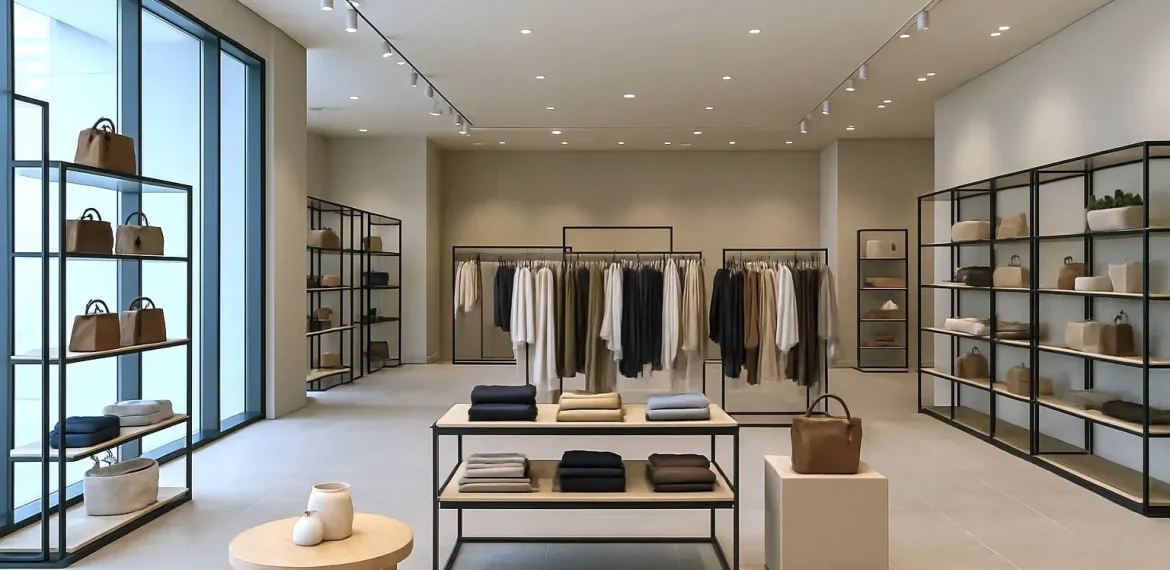Retail Store Trends and Strategies for the Future
A retail store is more than just a place to sell products; it is a dynamic space where customer experience, brand identity, and operational efficiency intersect. In an era where online shopping continues to grow, physical retail stores remain crucial by offering a unique and tangible experience that digital platforms cannot replicate. For retailers, the key to success lies in creating spaces that not only showcase products but also build strong emotional connections with customers.

The Changing Role of the Retail Store
Retail has transformed significantly in the last decade. Previously, a retail store served as a straightforward transaction point, but today it has evolved into an immersive environment. Customers visit retail spaces not only to buy but to explore, engage, and connect with brands. The modern retail store must therefore combine design, technology, and customer service into a seamless experience.
Design as a Strategic Tool
The design of a retail store plays a crucial role in influencing customer behavior. Store layout determines how shoppers move through the space, while lighting, colors, and materials shape their perception of the brand. Open layouts, attractive displays, and clear signage make shopping easier and more enjoyable. More importantly, design ensures that the store reflects the brand’s personality, which builds recognition and loyalty.
Technology Integration in Retail Stores
Technology has become a cornerstone of modern retail. From self-checkout systems to interactive kiosks and digital price tags, retail stores are integrating innovations that streamline operations and enhance customer satisfaction. Smart shelves, inventory tracking systems, and real-time analytics enable retailers to optimize stock levels and reduce costs. For customers, technology adds convenience, such as mobile payments, click-and-collect options, or augmented reality fitting rooms.
Sustainability in Retail Store Design
Sustainability is no longer optional; it is a priority. Retailers are rethinking store design to reduce environmental impact. Energy-efficient lighting, recycled materials, and eco-friendly packaging are increasingly common. A retail store that visibly demonstrates its commitment to sustainability not only lowers its carbon footprint but also appeals to environmentally conscious consumers.
The Role of Customer Experience
Customer experience is at the heart of every retail store strategy. Friendly staff, personalized service, and immersive design all contribute to how customers feel inside a store. Sensory elements such as music, scents, and textures add depth to the experience. Retailers who prioritize customer-centric design can create memorable visits, increasing the likelihood of repeat purchases.
Retail Store Flexibility
The future demands flexibility. A modern retail store must be able to adapt quickly to changing trends, product launches, or seasonal promotions. Modular shelving, movable displays, and digital signage make it easy to refresh the look and feel of a store without significant costs. This adaptability ensures that the space always feels new and exciting for returning customers.
Digital and Physical Integration
Although e-commerce continues to grow, physical stores remain vital because they allow customers to interact with products. The most successful strategy combines online and offline experiences. For example, many retailers encourage customers to browse online before visiting a retail store, or they use stores as fulfillment centers for online orders. This “phygital” approach ensures that customers enjoy both the convenience of digital shopping and the sensory benefits of physical spaces.

Case Example of Retail Store Transformation
To see how a retail store can be transformed into a brand experience, you can explore real-life examples like this boutique project. Such projects illustrate how thoughtful design, material choice, and lighting can create an atmosphere that strengthens customer loyalty while driving sales.
Key Takeaways for Retailers
- Focus on design: Make sure your retail store reflects your brand identity.
- Embrace technology: From digital signage to smart shelves, use innovation to streamline processes.
- Prioritize sustainability: Show your customers that you care about the environment.
- Invest in customer experience: Train staff, curate ambiance, and provide personalized service.
- Stay flexible: Keep your space adaptable to new trends and consumer needs.
Retail Stores as the Future of Customer Engagement
In a digital-first world, retail stores provide something irreplaceable: human connection and physical engagement. Customers want to see, touch, and experience products before making decisions. By aligning store design, sustainability, technology, and service, a retail store becomes more than a sales channel—it becomes a stage where the brand story comes alive.
Sustainability as a Design Choice
Sustainability is becoming a key factor in retail design. Boutique decoration can embrace eco-friendly principles by using reclaimed wood, recycled materials, and energy-efficient lighting. This not only appeals to environmentally conscious shoppers but also positions the boutique as a socially responsible brand.
Inspiration from Real Projects
To see how boutique store decoration transforms retail environments into brand showcases, explore this boutique project. It demonstrates how thoughtful design choices, from fixtures to lighting, can create an atmosphere that resonates with customers while staying true to the brand identity.
Boutique Store Decoration Tips for Retailers
- Prioritize your brand story – Every decoration choice should reinforce what your boutique stands for.
- Maximize small spaces – Use mirrors, strategic lighting, and modular displays to make your store feel larger.
- Invest in quality fixtures – Durable, aesthetically pleasing fixtures enhance both appearance and function.
- Rotate visual displays – Regular updates keep the store fresh and encourage repeat visits.
- Incorporate art and culture – Collaborations with local artists or thematic installations can make the boutique feel unique and rooted in the community.
Boutique Store Decoration as a Competitive Edge
In today’s retail environment, where e-commerce continues to grow, boutiques have the opportunity to stand out through immersive, in-person experiences. Boutique store decoration is one of the most effective tools for creating such experiences. It allows retailers to engage customers emotionally, make lasting impressions, and turn shopping into a journey rather than a transaction.

